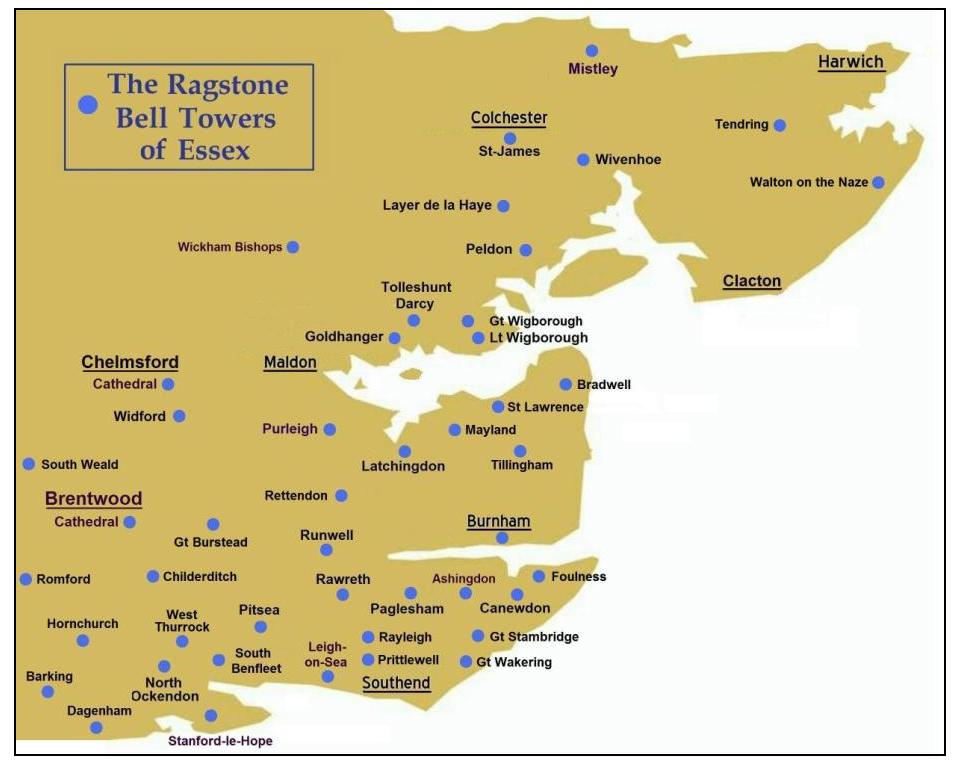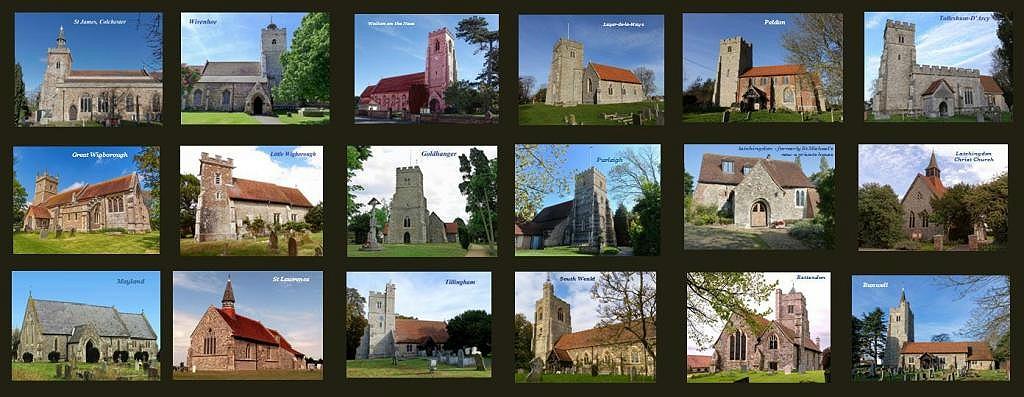|
The Ragstone Bell
Towers of the Essex Coast Essex Kentish ragstone castles and Tudor redbrick
towers are at the end of the page |
|||
|
Along with St Peters tower,
Goldhanger about 47 Church towers near the Essex coast are built with Kentish
Ragstone and are shown on this map... |
|||
|
here is an introductory video
available entitled: |
|
||
|
The name Ragstone has its origins with the early
stonemasons who observed that this Kent stone produced a particularly ragged
surface when split with a chisel, unlike many other softer UK sand and lime
stones. The predominance on church towers of buttresses, with large areas of
blank walls broken only with horizontal string courses and crenulations on
the tower parapet that resemble military defensive architecture all helps to
create an impression of solidarity, durability and permanence. Most of the towers were built in the 14th and 15th
centuries when Essex villages were under threat of invasion by European
counties such as France, Holland and Spain and seem to have been originally
buit for a variety of reasons... Visual impact without a tower simple churches tend to resemble
barn-like structures. Observation tower Being on high ground and close to the coast many of
these towers had excellent views along the estuaries and out to sea. This
would have been important at times of threat of invasion. A signalling tower The tower would have been the fastest way to send and
receive messages to and from nearby villages and towns. As well as sounding a bell, flags would
have been used during daylight hours and beacons at night. Many of these
coastal towers can be seen and be seen on clear days from other towers and
would have been able to send, receive and pass on signals. A fortified tower The tower and church with small windows and heavy
doors could provide villagers with a safe refuse if threatened by attack from
an invading force. Between 1200 and 1600 before anyone could start
constructing a Crenulated or Castellated building, including the church, the
King’s permission was needed. Having partitioned the King a Crenulation
Certificate with a royal seal was received. There was no fee so it wasn’t a
form of tax, rather a commitment of royalty. A smuggler’s lookout During the peak smuggling era churches and their
priests tended to side with the smugglers because they werent comfortable with
the lack of local funding from the crown which contrasted with the uses the
crown put the money to overseas to acquire new territories. For time keeping Tall towers were ideal for sundials and pendulum
clocks at a time when few ordinary folk could afford a clock. As a bell tower When first built most towers only had one or two bells.
More were added later and today English style bellringing is the main use for
these towers. Here is a recording
of “Plain
Bob Doubles” on 6 bells... |
|||
|
. |
|||
|
The album below contains images of most of these Essex
coastal fortified and castellated towers. They can be easily spotted by the
similar appearance of the stone. The album also contains images of Victorian
towers with spires that were also built of Ragstone in Victorian times, plus
Essex castles and other ragstone buildings identified while researching the
subject... |
|||
|
_____________________________________ |
|||
|
While
researching this subject several castles and forts
in Essex that were also constructed of Kentish ragstone were identified and
are shown on this
map... |
|||
|
_____________________________________ |
|||
|
|
Also when researching
the subject of Essex bell towers and while studying the history of Beckingham Hall with its Tudor bell tower next
door, it became clear that this redbrick tower and various others close to
the Essex coast had many similarities to the Ragstone bell towers described
above (including the views)
to justify a separate study and their inclusion here. This
map shows the location of the Tudor redbrick tower identified... |
||
|
and here are
photos of the 12 similar Essex coast towers that have been found... |
|||
|
_____________________________________ |
|||


